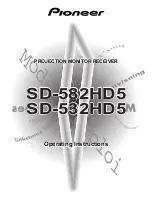
5
ABB
Erection
The potential device may be lifted from its crate or pallet
and handled by means of the two lifting lugs on the side of
its roof to mount it on the circuit breaker or the transformer.
Depending on the particular breaker or transformer bracket
provided for the lower edge of the potential device, proceed
as follows (see Fig. 1):*
a.
If the lower device support on the transformer or breaker
carries two tapped holes then bolt the J bracket, which
is shipped loose with the potential device, to this pad
using the two countersunk head bolts provided. There
is a notch in the center of the rear lower flange of the
device, which will fit into the hook provided by this J
bracket. Rest the weight of the potential device into
this bracket and place the two bolts into the two slots
of the upper device support, and secure these in place.
b.
If the transformer or breaker carries a lower device
support consisting of a bent steel bar, and with two
notches cut into its edge instead of two tapped holes,
then the J bracket may be scrapped and the potential
device rested directly on the notched bar. The upper
end is bolted into place with the two bolts.
c.
In either case, the paint shall be scraped away from the
upper pad where it is bolted against the corresponding
pad on the breaker or transformer in order to assure a
good ground connection at this point.
d.
The primary connection is made by installing the high
voltage cable assembly of Fig. 2. This is done with the
bushing grounded. The cable is installed by removing
the mounting flange cover from the side of the potential
device housing and removing the cover from the tap
receptacle on the bushing flange. The tap receptacle
on the bushings of recent manufacture may be found
filled with approximately one pint of transformer oil, which
will drain out when the cover is removed. Discharge the
bushing tap layer by touching the socket
contact with a grounded wire.
1. If the bushing is ABB O plus C or other type that
permits addition of transformer oil to the test tap with
the tap cover in place, you may choose to fill the PBA
connector housing with transformer oil. In this case,
do not add the petrolatum to the PBA connector housing.
2. Otherwise, pack the inside of the PBA connector housing
with the petrolatum provided, taking care to leave no
air pockets.
e.
Push the bushing connector into the tap, then thread the
PBA connector housing into the threaded portion of the
bushings tap. Tighten by hand, approximately 1/4 turn
after the gasket is in contact with both the tap and the
connector housing. Lubricate the gasket with a thin
application of transformer oil or petrolatum whichever is
being used.
f.
Turn the PBA cable draw nut clockwise, until tight.
g.
If you have chosen to fill the PBA connector housing with
transformer oil, do so now. Please see the bushing's
application literature for filling instructions and oil expansions
space requirements.
h.
Place the porcelain end of the cable assembly into the
hole in the side of the potential device housing.
Bolt the two flanges in place using the hardware
provided. The composition flange at the cable end
is also the gasket. Draw up the bolts progressively
around the cable so that there is not excessive pressure
at any point. Tighten up the bolts only sufficient to create
a slight bulge all around the edge of the composition.
i.
Connect the internal jumper connection in line with
diagram of Fig. 6 by opening the PBA'S door and
partially dropping the front panel assembly.
It is suggested that when a device is installed and connected
that its voltage adjustment be set to a minimum (and the
ground switch opened) until such time as the normal bur-
den is connected and the device adjusted.
* If the device is to be mounted on equipment that is not
manufactured by ABB, the mounting arrangement may
be slightly different than described here.


































